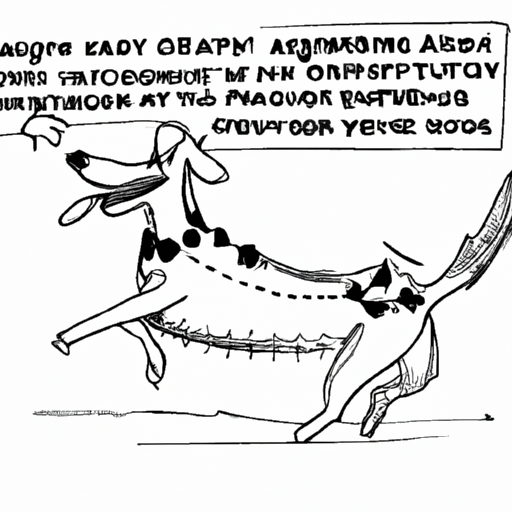As a caregiver, whether it’s for humans or animals, it’s crucial to understand body language. When it comes to dogs, one of their most expressive body parts is their tail. So, let’s delve into the fascinating world of dog tails and how they wag them.
1. The Anatomy Of A Dog’s Tail
Just like humans have bones in their spines, dogs have bones in their tails. In fact, a dog’s tail is essentially an extension of its spine. Depending on the breed, a dog’s tail can have between six to 23 individual vertebrae.
Dogs also have muscles that control their tail movement. This is why they can wag their tails in different ways, at different speeds, and at different heights.
2. Why Dogs Wag Their Tails
Dogs wag their tails as a form of communication. It’s a way for them to express their emotions and intentions. Here are some common reasons why dogs wag their tails:
- Happiness: When a dog is happy, it will often wag its tail in a loose, relaxed manner.
- Excitement: An excited dog might wag its tail rapidly and in wide arcs.
- Anxiety or Submission: A dog that is anxious or submissive might tuck its tail under its body and wag it slightly.
Note that the direction and height of the tail wag can also indicate different emotions.
3. How Dogs Learn To Wag Their Tails
Dogs aren’t born knowing how to wag their tails to communicate. Instead, they learn this behavior as they grow and interact with other dogs and humans.
Puppies start wagging their tails when they’re about a month old, which is when they begin to socialize with their littermates and mother. They then refine their tail-wagging skills as they grow and have more social interactions.
4. Tail Wagging and Breed Differences
Different breeds of dogs have different tail shapes and sizes, which can affect how they wag their tails. For instance, a Poodle with a docked tail will wag its tail differently than a Greyhound with a long, whip-like tail.
Dog breeds with naturally short or curled tails, like Bulldogs or Pugs, can still wag their tails, but the movement might be less noticeable than in breeds with long tails.
5. The Science Behind Tail Wagging
Research has shown that dogs wag their tails to the right when they’re happy or relaxed and to the left when they’re anxious or scared. This is thought to be because the right side of the dog’s brain, which controls the left side of the body, is associated with positive feelings, while the left side of the brain, which controls the right side of the body, is associated with negative feelings.
Frequently Asked Questions
Q1: Can dogs wag their tails when they’re alone?
A1: Yes, but it’s less common. Dogs mainly wag their tails as a form of communication with others.
Q2: Can a dog still wag its tail if it’s injured?
A2: Yes, but the movement might be limited or look different than usual.
Q3: How can I tell if my dog is happy or scared by its tail wag?
A3: Generally, a relaxed, right-side tail wag indicates happiness, while a tense, left-side wag indicates fear or anxiety.
Q4: Why does my dog wag its tail in its sleep?
A4: Dogs can wag their tails in their sleep, possibly as a response to dreams.
Q5: What should I do if my dog isn’t wagging its tail as much as usual?
A5: Changes in tail wagging could be a sign of physical discomfort or emotional distress. If you notice any significant changes, consult with a veterinarian.



